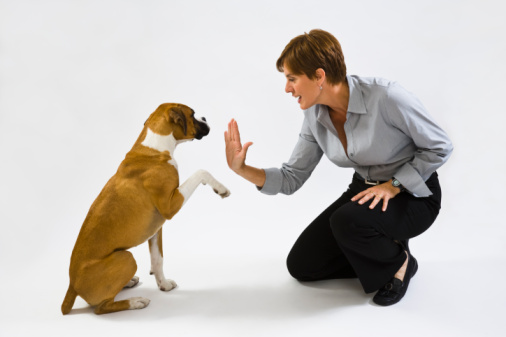How to train your dog for dog show
Showing dogs, or "conformation" is a popular and enjoyable activity for many dog owners. It gives you a chance to build a stronger bond with your dog, and also to show off your canine friend to an adoring public. But, before your dog can trot to success, you need to train it for the stage so it can steal the show. This will be easiest if you begin when your dog is still a puppy. Make sure your dog is eligible to participate. Before you invest a lot of time and effort in training your dog, you will want to make certain your dog will be allowed to take part in dog shows Your dog must also be registered as a purebred with the appropriate breed club and conform to all breed guidelines. If you got your dog from a breeder, they probably gave you the certification paperwork showing your dog is registered. If not, you'll need to contact the appropriate breed club. The AKC has an online directory you can use to contact the club Your dog must also be registered as a purebred with the appropriate breed club and conform to all breed guidelines. If you got your dog from a breeder, they probably gave you the certification paperwork showing your dog is registered. If not, you'll need to contact the appropriate breed club. The AKC has an online directory you can use to contact .A great show dog is either made or lost according to how well she was socialized as a pup. A puppy may have perfect conformation, but if she's shy with people and wilts like a flower when you take her to new places, she will never perform well enough to win in the ring.Expose her to new places, people, situations, noises, etc. Get the right lead. When your dog walks out into the ring, you'll need to have it on the right kind of leash or "lead." The sooner you get one of these, the sooner your dog can get comfortable with being on it. Go online or ask at your local pet store for one of these:For a medium sized dog, you can use a martingale lead. These leads close up enough to keep your dog's head from slipping out, but don't tighten around a dog's neck like a choke-chain. They also help to train your dog to keep its head held up high while showing judges their gait, and while stacking. Ringcraft classes can help you socialize your dog to other people and dogs. They can also help the dog learn to walk on a lead without being distracted by other dogs . In a dog show, judges will physically examine a dog, touching its body and mouth. A successful show dog will need to tolerate this without complaint.
- A good first step in getting your dog accustomed to this is to to touch the dog all over its body daily, including inside its mouth. If you start this at a young age, your dog will quickly grow accustomed to it.
- Next, begin giving your dog regular inspections that approximate those of a judge. Closely examine the dog's teeth. For males, touch the testicles. Do this on both a table and the floor, if your dog is smaller in size. While small dogs are usually inspected on a table, some judges will begin inspection while the dog is still on the ground.
- Finally, when the dog is comfortable with your inspections, bring in a second person and ask ask them to do the same. This way, your dog will get comfortable with inspection by strangers.










